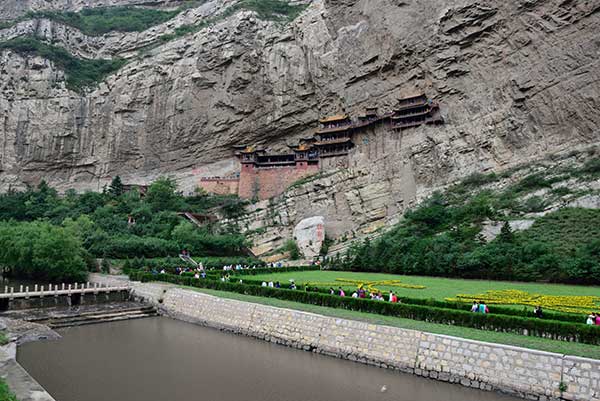Precarious yet peaceful pavilions
 |
|
[Photo by Aron Deepankar/For chinadaily.com.cn] |
The monastery has pavilions hanging from the steep cliff, joined with narrow ladders and corridors. Originally built in the Northern Wei dynasty (AD 386-534), it has survived the vicissitudes of time and nature, although parts have been rebuilt over time. One local belief is that it was built to tame the river that flows 50 meters below so no floods would come, a reason that is said to also be behind the building of the Leshan Giant Buddha in Sichuan province.
The Hanging Monastery is an engineering marvel. When you look at it, you are deceived into believing that the vertical beams that support it are the ones on which the temple rests.
The main load is actually carried by horizontal and lateral beams that were drilled into the seemingly impregnable mountain cliff in an era that had neither machines to drill with nor dynamite to blast with. Li Jing, our knowledgeable tour guide, told us that to begin with, the builders hammered ladders into the cliff and after the construction was complete, the ladders were removed.
She added that the Buddhist statues inside are unique, as they are made of silk, while most others are carved from stone.
Our prayers were answered when, after the previous day of constant rainfall, the sun, although subdued, made an appearance, however brief, penetrating the cover of clouds and making the Hanging Monastery shine on the barren cliff.
Two monks dressed in the typical gray robes greeted us at the base of the mountain as we descended and an almost spontaneous chanting of the Tibetan Buddhists, "'Om mani padme hum" started echoing through the valley. As some of our group took photographs, others joined in chanting the mantra.
It was a perfect ode to the Hanging Monastery!














